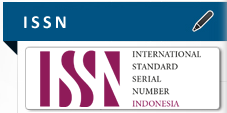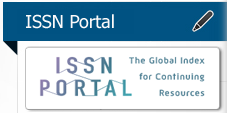PEMBERIAN ZAT BESI PADA IBU HAMIL DAN HASIL LUARAN BAYI: LITERATURE REVIEW
Abstract
Background: One factor of perinatal mortality is caused by low birthweight. Factors affecting babies with low birth weight from the intake of folic acid, iron. The nutritional status of pregnant women that is not fulfilled causes anemia so that it has a risk of low birthweight.
Objective: This study aims to provide the effect of supplementation with infant outcomes
Method: The research method is scoping review with PRISMA approach. Search using electronic databases such as PubMed, Science Direct and Scopus. Literature review is carried out in international journals published within the last 5 years, full text, and not the results of review.
Results: Prevention of anemia by giving blood-added tablets containing iron and folic acid is very important in pregnant women. Moderate and severe anemia in pregnant women can result in the risk of low birth weight, prematurity, growth retardation in the uterine, fetal distress, asphyxia, stillbirth.
Conclusion: Giving blood-added tablets and education to pregnant women related to adherence to taking blood-added tablets is very important for the prevention of anemia in pregnancy so as to produce normal baby outcomes.
Keywords
Full Text:
PDF (Bahasa Indonesia)References
Aghadiati, F. (2020) ‘Hubungan Asupan Asam Folat, Zat Besi Dan Status Ekonomi Keluarga Dengan Berat Bayi Lahir’, Jurnal Kesehatan Terpadu (Integrated Health Journal), 11(1), pp. 1–7. doi: 10.32695/jkt.v11i1.52.
Arsyi, M. et al. (2022) ‘Antenatal Care Services and Incidence of Low Birth Weight: A Comparison of Demographic and Health Surveys in 4 ASEAN Countries’, Journal of Preventive Medicine and Public Health, 55(6), pp. 559–567. doi: 10.3961/jpmph.22.316.
Aryastami, N. K. et al. (2017) ‘Low birth weight was the most dominant predictor associated with stunting among children aged 12-23 months in Indonesia’, BMC Nutrition, 3(1), pp. 1–6. doi: 10.1186/s40795-017-0130-x.
Ba, D. M. et al. (2019) ‘Adherence to Iron Supplementation in 22 Sub-Saharan African Countries and Associated Factors among Pregnant Women: A Large Population-Based Study’, Current Developments in Nutrition, 3(12), p. nzz120. doi: https://doi.org/10.1093/cdn/nzz120.
Bancha, B. et al. (2022) ‘Time to non-adherence to iron and folic acid supplementation and associated factors among pregnant women in Hosanna town, South Ethiopia: Cox-proportional hazard model’, PLoS ONE, 17(9 September). doi: 10.1371/journal.pone.0275086.
Biracyaza, E. et al. (2022) ‘Regular antenatal care visits were associated with low risk of low birth weight among newborns in Rwanda: Evidence from the 2014/2015 Rwanda Demographic Health Survey (RDHS) Data’, F1000Research, 10, pp. 1–27. doi: 10.12688/f1000research.51969.2.
Caniglia, E. C. et al. (2022) ‘Iron, folic acid, and multiple micronutrient supplementation strategies during pregnancy and adverse birth outcomes in Botswana’, The Lancet Global Health, 10(6), pp. e850–e861. doi: https://doi.org/10.1016/S2214-109X(22)00126-7.
Detlefs, S. E. et al. (2022) ‘The impact of response to iron therapy on maternal and neonatal outcomes among pregnant women with anemia’, American Journal of Obstetrics & Gynecology MFM, 4(2), p. 100569. doi: https://doi.org/10.1016/j.ajogmf.2022.100569.
Dinas, K. (2021) ‘KABUPATEN KUDUS TAHUN 2021’.
Edelson, P. K. et al. (2023) ‘Maternal anemia is associated with adverse maternal and neonatal outcomes in Mbarara, Uganda’, The journal of maternal-fetal & neonatal medicine : the official journal of the European Association of Perinatal Medicine, the Federation of Asia and Oceania Perinatal Societies, the International Society of Perinatal Obstetricians, 36(1), p. 2190834. doi: 10.1080/14767058.2023.2190834.
Fite, M. B. et al. (2022) ‘Prevalence, predictors of low birth weight and its association with maternal iron status using serum ferritin concentration in rural Eastern Ethiopia: a prospective cohort study’, BMC Nutrition, 8(1). doi: 10.1186/s40795-022-00561-4.
Georgieff, M. K. (2020) ‘iron Deficiency in Pregnancy’, American Journal of Obstetrics and Gynecology, 223(4), pp. 516–524. doi: 10.1016/j.ajog.2020.03.006.Iron.
Gu, H. et al. (2017) ‘A gradient relationship between low birth weight and IQ: A meta-analysis’, Scientific Reports, 7(1), pp. 1–13. doi: 10.1038/s41598-017-18234-9.
Hardiyanti, D. and Yuliana, N. (2021) ‘Hubungan Ibu Hamil Anemia dengan Kejadian Risiko Berat Badan Lahir Rendah di Puskesmas Martapura Timur’, 9(November), pp. 143–147.
Hasibuan, N. F. et al. (2023) ‘Faktor--Faktor Yang Mempengaruhi Terjadinya Berat Badan Lahir Rendah (BBLR) di Rsu Delima Medan Tahun 2022’, Journal of Educational Innovation and Public Health, 1(1), pp. 149–164.
Iglesias-Vázquez, L. et al. (2023) ‘Importance of Maternal Iron Status on the Improvement of Cognitive Function in Children After Prenatal Iron Supplementation’, American Journal of Preventive Medicine. doi: https://doi.org/10.1016/j.amepre.2023.02.006.
Kamau, M. W., Mirie, W. and Kimani, S. T. (2019) ‘Maternal knowledge on iron and folic acid supplementation and associated factors among pregnant women in a rural County in Kenya’, International Journal of Africa Nursing Sciences, 10, pp. 74–80. doi: https://doi.org/10.1016/j.ijans.2019.01.005.
Kemenkes, R. (2018) ‘Pedoman Penatalaksanaan Pemberian Tablet Tambah Darah’, Kemenkes RI, p. 46. Available at: https://promkes.kemkes.go.id/download/fpck/files51888Buku Tablet Tambah darah 100415.pdf.
Kemenppa RI (2018) ‘Profil Kesehatan Anak Indonesia Tahun 2018’, Ilmu Pendidikan, 5(1), pp. 12–21.
Kementerian Kesehatan RI (2018) Profil Kesehatan Indonesia 2017. doi: 10.1002/qj.
Kudus, D. K. K. (2021) ‘Profil Kesehatan Kabupaten Kudus 2021’, Dinas Kesehatan Kabupaten Kudus.
Kwan, S. T. (Cecilia) and Kezer, C. A. (2020) ‘Maternal Iron Nutriture Modulates Placental Development in a Rat Model of fetal Alcohol Spectrum Disorder’, PMC, pp. 139–148. doi: 10.4049/jimmunol.1801473.The.
Mahmudian, A. A., Dian Aby Restanty and Sugijati, S. (2021) ‘Hubungan KEK dengan Anemia Gravidarum pada Ibu Riwayat BBLR’, ARTERI : Jurnal Ilmu Kesehatan, 2(3), pp. 80–85. doi: 10.37148/arteri.v2i3.165.
McArdle, H. J., Gambling, L. and Kennedy, C. (2014) ‘Iron deficiency during pregnancy: The consequences for placental function and fetal outcome’, Proceedings of the Nutrition Society, 73(1), pp. 9–15. doi: 10.1017/S0029665113003637.
Menteri Kesehatan Republik Indonesia (2020) ‘Peraturan Menteri Kesehatan Tentang Perubahan Atas Peraturan Menteri Kesehatan Nomor 21 Tahun 2020 Tentang Rencana Strategis Kementerian Kesehatan Tahun 2020-2024’, 16 Januari 2020, (3), pp. 1–592. Available at: https://peraturan.bpk.go.id/Home/Download/212694/Permenkes Nomor 13 Tahun 2022.pdf.
Nazi, S. and Aliabadi, F. (2015) ‘Comparison of motor development of low birth weight (LBW) infants with and without using mechanical ventilation and normal birth weight infants’, Medical Journal of the Islamic Republic of Iran, 29(1), pp. 1202–1209.
Nyamasege, C. K. et al. (2019) ‘Determinants of low birth weight in the context of maternal nutrition education in urban informal settlements, Kenya’, Journal of Developmental Origins of Health and Disease, 10(2), pp. 237–245. doi: 10.1017/S2040174418000715.
Odongkara, B. et al. (2022) ‘Incidence and Risk Factors for Low Birthweight and Preterm Birth in Post-Conflict Northern Uganda: A Community-Based Cohort Study’, International Journal of Environmental Research and Public Health, 19(19). doi: 10.3390/ijerph191912072.
Oluwafemi, R. O., Adesina, F. P. and Hassan, A. O. (2022) ‘Outcomes and Disease Spectrum of LBW Neonates in a Secondary Health Facility’, Journal of Healthcare Engineering, 2022. doi: 10.1155/2022/9974636.
Perdana, R. A., Lathifah, N. S. and Mariza, A. (2022) ‘ANJANI Journal : Health Sciences Study Available online at : http://journal.pdmbengkulu.org/index.php/anjani DOI : https://doi.org/13.11114/anjani.1.x.x1-x2 Faktor-Faktor Yang Mempengaruhi Penggunaan Kartu Kotak Kontrol Minum Tablet Tambah Darah Pada Ibu ’, 2(2), pp. 78–88.
Perwitasari, O. N. and Wijayanti, L. A. (2022) ‘Faktor Risiko yang Berhubungan dengan Kejadian Bayi Berat Lahir Rendah’, Pembangunan Kesehatan, 1(5), pp. 101–104.
Prasiska DI (2014) ‘Analisis Faktor Risiko Berat Badan Lahir pada Kematian Prinatal Menggunakan Meta analisis’, Jurnal Biometrika Kependudukan, 3(1), pp. 28–33.
Rahadinda, A., Utami, K. D. and Reski, S. (2022) ‘Hubungan Anemia pada Ibu Hamil dengan Kejadian BBLR di RSUD Abdul Wahab Sjahranie Samarinda’, 1(5), pp. 421–432.
Rahmadani, D., Noflidaputri, R. and Delvina, V. (2022) ‘Analisa Faktor Penyebab Kejadian BBLR di Wilayah Kerja Dinas Kesehatan Kota Solok Received : 04-06-2022 Revised : 07-06-2022 Accepted : 25-06-2022 PENDAHULUAN BBLR adalah bayi dengan berat lahir kurang dari 2500 gram tanpa memandang masa gestasi . Berat l’, 2(6), pp. 656–667.
Sema, A. et al. (2019) ‘Associated Factors with Low Birth Weight in Dire Dawa City, Eastern Ethiopia: A Cross-Sectional Study’, BioMed Research International, 2019. doi: 10.1155/2019/2965094.
Sunarti, Rismayana and Elfina (2022) ‘Pengaruh Peningkatan Berat Badan selama Kehamilan terhadap Berat Badan Bayi Baru Lahir di Puskesmas Batua Makassar Tahun 2020’, Jurnal Pendidikan Tambusai, 6(2), pp. 11005–11010.
Symington, E. A. et al. (2019) ‘Maternal iron-deficiency is associated with premature birth and higher birth weight despite routine antenatal iron supplementation in an urban South African setting: The NuPED prospective study’, PLoS ONE, 14(9). doi: 10.1371/journal.pone.0221299.
Tiurlan, et all (2022) ‘Riwayat Anemia dan Hipertensi menjadi Faktor Dominan kejadian Berat Badan Lahir Rendah’, HEALTHY : Jurnal Inovasi Riset Ilmu Kesehatan, 1(3), pp. 132–141.
Wachamo, T. M., Yimer, N. B. and Bizuneh, A. D. (2019) ‘Risk factors for low birth weight in hospitals of North Wello zone, Ethiopia: A case-control study’, PLoS ONE, 14(3), pp. 1–15. doi: 10.1371/journal.pone.0213054.
Wahabi, H. A. et al. (2022) ‘Iron deficiency anemia in pregnancy: Subgroup analysis from Riyadh mother and baby multicenter cohort study (RAHMA)’, Journal of Applied Hematology, 13(1), pp. 47–53. doi: 10.4103/joah.joah_133_21.
Weyori, A. E. et al. (2022) ‘Antenatal care attendance and low birth weight of institutional births in sub-Saharan Africa’, BMC Pregnancy and Childbirth, 22(1), pp. 1–8. doi: 10.1186/s12884-022-04576-4.
Who and Chan, M. (2011) ‘Haemoglobin concentrations for the diagnosis of anaemia and assessment of severity’, Geneva, Switzerland: World Health Organization, pp. 1–6. doi: 2011.
Widyastuti, R. et al. (2022) ‘Determinants Of Mothers and Components of Antenatal Care Services With Fetal Outcome in Indonesia 9Analysis of secondary data of RISKESDAS 2018)’, 8(4), pp. 717–726.
World Health Organisation (WHO) (2018) ‘Accelerate reduction of maternal, neonatal and under five mortality’, p. 6.
Zhao, D. et al. (2022) ‘Risk factors for iron deficiency and iron deficiency anemia in pregnant women from plateau region and their impact on pregnancy outcome.’, American journal of translational research, 14(6), pp. 4146–4153.
DOI: https://doi.org/10.26751/ijb.v7i1.2043
Refbacks
- There are currently no refbacks.
Indonesia Jurnal Kebidanan indexed by
Published by LPPM Universitas Muhammadiyah Kudus
Jl. Ganesha Raya No.I, Purwosari, Kec. Kota Kudus, Kabupaten Kudus, Jawa Tengah 59316
This work is licensed under a Creative Commons Attribution-ShareAlike 4.0 International License.








